Incredibly air and colorful representatives of the Iris family conquer the hearts of gardeners at a glance. True, we treat them is not very fair: our gardens are decorated with tall rhizable plant species, while bulbous irises will undeservedly be ignored. Among the amateurs of flowers there is an opinion that the whims of bulbous crops do not cost efforts spent on the painstaking care of them, but it is not so! With accuracy, observing the agricultural engineering of planting and growing bulbous irises, you can achieve impressive results.
Description of species of bulbous irises
Beautifully blooming bulbous culture is divided into 3 species.
Iridodikim, or Iris Mesh, Iris Retic
Bright Early Handsome Handsaws Compare in Graceing and Charming with Crocus, Process, Galantus and Szillla. Iridodikim is the miniature view of a bulbous Iris. The height of an adult instance of the plant does not exceed 15 cm.
Slightly elongated or rounded plant bulbs reach 2 cm in the diameter. They are covered by rows of mesh scales. The stem of iridodicium is framed with an elongated narrow 3- or 4-faceted leaves. The flower of bulbous iris of this species attracts fragrant aroma. The color of the petals is very diverse and varies from white to a purple, with beautiful transitions from the dark to a light tone and a well-pronounced beard. The perianth consists of six petals, three of which are internal (narrowed, needed in the upper part, wavy light tone) and three external (horizontally reserved marked with a bright strip in the center). Each bloomon crowned one flower. The fruit is a box filled with seeds of irregular shape.
In the spring, the color pains appear first, then leaves. When Iris mesh blooms, its leaves are barely stretched up to 10 cm, but after a while they increase to 45 cm. The flowering lasts about two weeks. Closer to the beginning of June, the leaves of the Iris are yellow and a little later die - the plant is preparing to rest. The bulbs of iridodicium are known for their frost resistance and in the regions with a mild climate calmly winter in the ground.
One of the most popular and strong varieties of the bulbous mesh iris - Catarina Hodgkin. The plant may be on one site for more than 5 years, without requiring a mandatory digging and drying.
Juno, or Iris Pearl
Juno - rare aristocratic bulbous culture. Flowers in the period from April to May, then the blooming and leaves die away. The plant grows at a height of 20 to 40 cm. Several leaf tiers resembling the sickle form surround the stem with two right rows. One flowers keeps on itself 2 - 5 flowers of pale yellow or firewood painting.
The plant leaves in the middle of June. During this period, the meaty bulbs of the iris dig up, thoroughly dried and put on the September in September. Unlike the Iris of the mesh, the junoon does not differ good resistance to low temperatures, so it is protected by a snapper or foliage.
The most beautiful and promising varieties of the species: Junon Bukhara, Warley, Blue, replacing.
Xifium, or Iris Dutch
Despite the prevalence and accessibility, in the family of Iris Xifium, the most arrogant. Most often in our gardens, the bulbous Dutch irises are militant - this is xifium. Their flowers love for a varied color palette: rich and pastel blue, deep blue, yellow, cream, white. Most of the varieties of Dutch irises are two-color. Beautiful and smooth mixing of flowers is observed closer to the middle of the bud.
The average size of the moon of xifium is characterized by a bottle form. After planting from it, narrow pointed on the tips leaves a saturated green color. Saving plants are unbranched, decorated with single flowers.
The plant completely does not tolerate the cold - the temperature of -10 ° C is detrimental to it. This species feature fully eliminates the question, whether to dig bulk irises: to preserve fragile beauty until next year, on the eve of the cold flashes, they definitely dig up, and in the spring it is planted back. In truth, the cost of Dutch irises is very democratic, so many flower products do not bother themselves by storing the bulbs and consider the irises of this species as an annual culture.
You can talk about the diversity of Dutch irises you can infinitely long: xifiums are very much, but they are all incredibly beautiful. Rate a photo of Dutch Lukovichny irises of different varieties:
- Depeche Mode;
- Black dragon;
- Amur Batyushka;
- Fruit cocktail;
- Forge Fire;
- Pampkin Cheesecake.
The Ksyphiums of the Spanish variety are even more vulnerable than their Dutch fellow, so they are certainly removed from the soil for the winter even in the south of the country. The variety of English xifiums is more frost-resistant and without problems grows in the middle lane of Russia, but on sale these plants are rare.
How to plant bulbous irises: Important recommendations
All types of bulbous irises are very sensitive to stagnation of water, so immediately refuse the idea to land them on a plot with a high level of groundwater and a bad drainage system - plants rotate. Ideal soil for bulbous irises light, nutritious, with sufficient drainage. This characteristics perfectly corresponds to sandy soil, filled with organic fertilizers. Light-loving iris is best planted on a well-lit plot. Even a partial shading will not allow the plant to bloom.
Time when planting bulbous irises depends on the type of plant. Thus, the most appropriate period for landing of iridodics and Juno is an early autumn. Ideally, you need to put the bulbs in the ground in early September. Landing can be made later, it is important that it happened 2 weeks before the arrival of the first frosts. If the iris bulbs turn out to be in the soil later, they simply do not have time to put roots and meet the winter are completely unprepared - the plant will most likely die. Landing and further care for bulbous iris can be postponed until spring, just keep in mind that spring irises will be able to bloom only in a year.
Ksifium, especially the "Dutch" and "Spaniards", are well in growth in March-April, when the sun's rays will already warm the soil to 10 ° C. Abundant flowering plants will delight you already in June-July.
Looking bulbous irises in spring and autumn: step by step instruction
Step one. Prepare the bulbs under the landing
Bulb plants - a tight piece for fungal rot. Before immersing bulwing into the ground, carefully inspect and appreciate their condition.
The planting material is usually bought at the end of winter or early spring. The most reliably choosing irises not in the natural markets, but in specialized points of sale, where the seller is responsible for compliance with the temperature regime during rest. Healthy bulb is flat, smooth, without dents, cuts and spots. It covers a dense shiny golden-brown sheath.
Before planting, planting material is treated with special preparations that protect young plants from fungus. To do this, it is possible to use a strong manganese solution, maximum or foundazole: immerse the bulbs 40 minutes into the disinfection solution, then thoroughly dry them and only then proceed to landing.
Step second. Prepare the soil
Pull up the right area and make sand or other baking agents, if the soil is too dense and misses moisture. Irises are extremely demanding in terms of the nutritionalness of the soil, so before landing adopt the land with a perennial compost. Fresh manure for bulbous cultures is contraindicated, because it can cause the development of diseases of fungal origin.
Step Three. Put the bulbs correct
Place the bulbs of the irises bottom down into small wells at a depth of no more than 8 cm. Observe the interval between the landing pits from 10 to 15 cm. Fresh landings do not water: for successful acclimatization of bulbs, it will be enough that they are in the soil. Purchase a holes with bulbies also needed with the mind: the soil layer over the future iris should correspond to the three diameters of the bulb itself (about 8 - 10 cm). Compliance with this recommendation will help the irises to survive the winter cold. According to experienced flowerflowers, intentionally increasing the depth of planting thermal-loving xifiums up to 15 - 20 cm makes it possible to preserve their bulwing in the soil in winter and turn their vicinet perennials.
In order to winter the xifiums planted in the fall, was comfortable, cover the landing by peat mulching layer, and at the top, put the pot or dry foliage.
Features of growing bulbous irises
Irises will certainly appreciate the abundant and regular watering in the spring, during the period of vegetative growth. But in the summer, the bulbous plant rests, so the bulbs should be kept in warm and dryness. Such ideal conditions can be provided by Iris, if you dig bulbs, dry them and put it until autumn in a box with sawdust. The temperature should be in the ramps 18 - 25 ° C. This is a mandatory procedure for tender Juno, iridodikioma can be left for the summer in the ground. But if the summer brought with you heavy rains and moisture, the landing of the mesh irises is protected by film or rubberoid.
Snowy and soft winters of iridodikiomes and junns carry enough calmly. But in miserable harsh periods with low temperatures of the soil above the bulbs, there is additional insulation. A reliable "blanket" landings serves a sweetheart that fell dry leaves or Loutrasil.
Responsible care for bulbous irises involves their correct storage. In order to ensure that the xifium is guaranteed from the freezing, they are digging them in the fall and keep them in a cold, but unscrewed room (cellar or refrigerator) at a temperature not more than 10 ° C.
How to propagate bulbous irises
Getting offspring from favorite colors has its own characteristics. The bulbous irises actively multiply and in 2 - 3 years turn into a whole nest of bulbs. The first kids appear a year after landing. In the summer, Irises dig up and share a nest on large and small bulbs. Large dried and stored until autumn, and the babies are not dried, immediately planting them on the growing. Blooms "Young" in 2 - 3 years.
Diseases and pests of bulbous irises
If the weather and climatic conditions go into a cut with optimal conditions for growing irises, the flowers begin to root and suffer from different pests. Originally infected by insect bushes of irises to identify very simple - pay attention to the number of their leaves. A healthy plant is increasing from 7 to 9 leaves, while the weak iris barely acquires 5 sheets.
At the beginning of the spring, the greatest danger for bulbous plants represent the voracious caterpillars of the butterfly scoop: they gnaw leaves and destroy the flowers. To protect against pests to the ground at the base of the irises, granosan is made. TRIPS - another enemy of bulbous plants. Insects usually accumulate in the stubble corners of the leaves. To get rid of them, try several times to make a diluted carbofos (20 - 30 g per 10 liters of water). Superphosphate will help in crude weather with mucons, which sprinkle the ground on the site with iris.
Indirectable harm to a bully plant causes bacterial rotting rhizomes. If you see the problem on time, the injured Iris can still be saved. To do this, the stunned areas are cut into a sharp knife to a healthy tissue, after which the cut is washed with a concentrated solution of potassium mangartage, and then novikov's liquid (a mixture of diagram green with BF-6 glue). Microorganisms, which caused the development of rotes die if we clear the soil near the rhizomes and warm the cut place under the straight sunshine.
Another dangerous disease for the irises is all forms of foliage foliage. As soon as yellowish spots appear on one of the bushes, all plantings are treated with enhanced effect (Fundazole, quadris, bravo, phytoosporin-M). If the stains managed to "sprawling" into several bushes, arrange several processing of irises with an interval of 7 to 8 days.

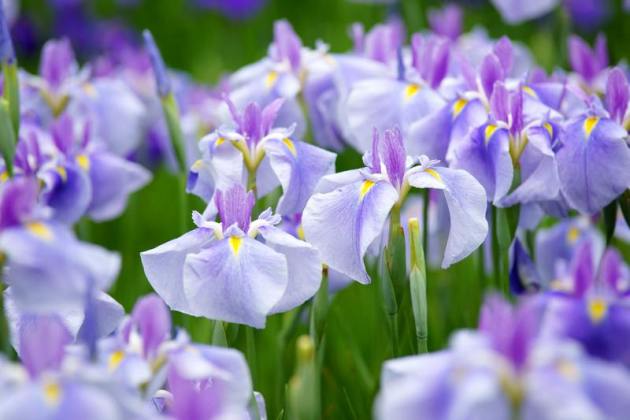
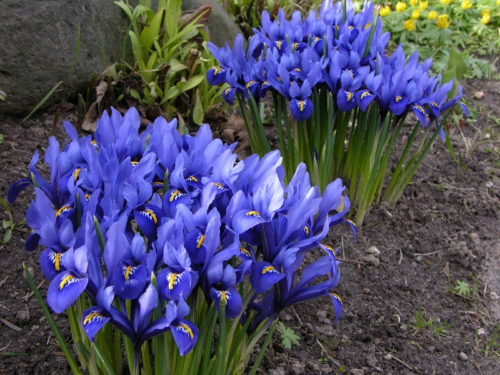
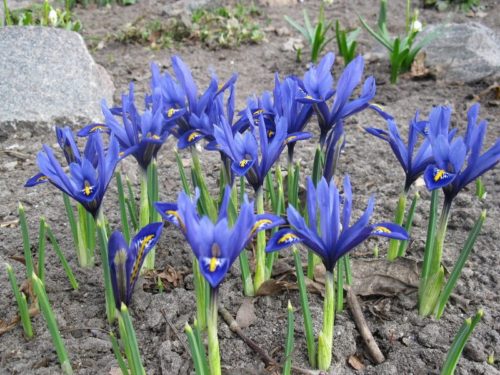
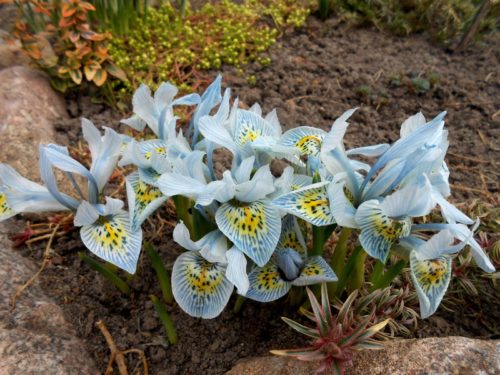
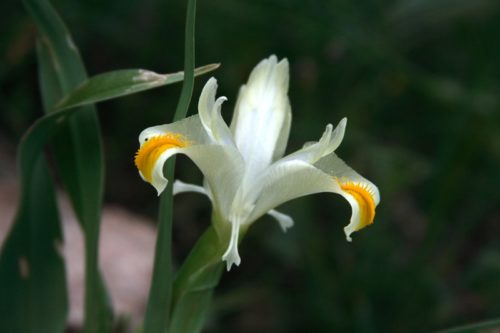
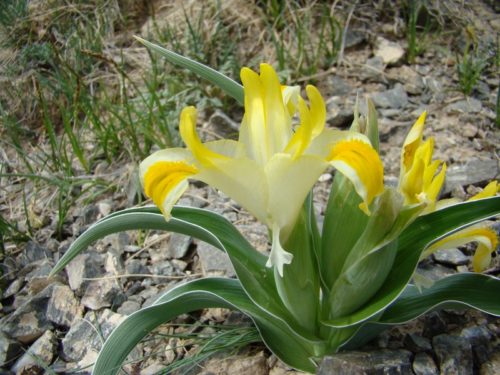
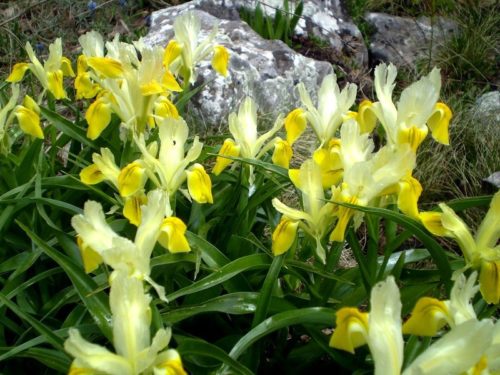
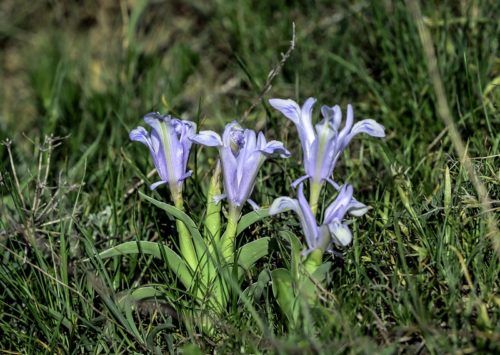
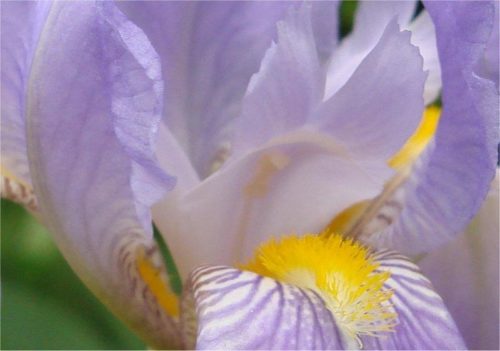
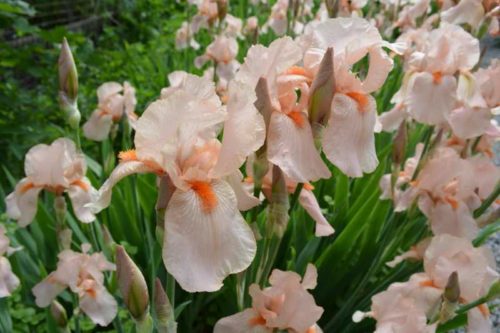

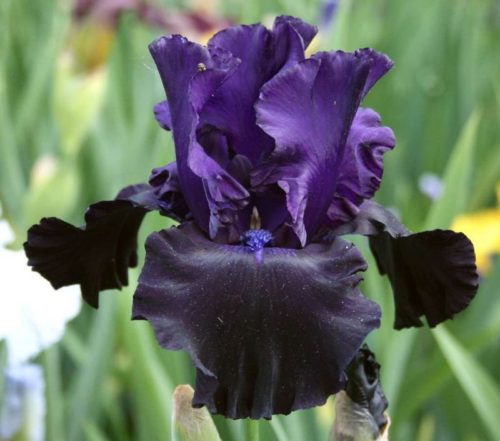


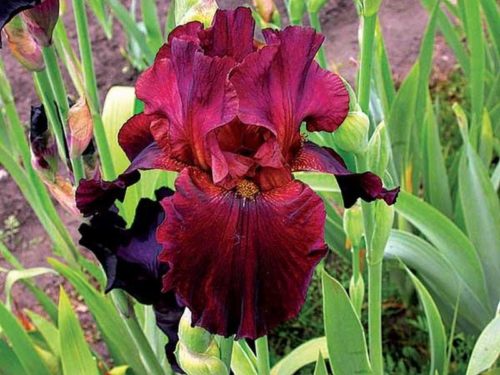
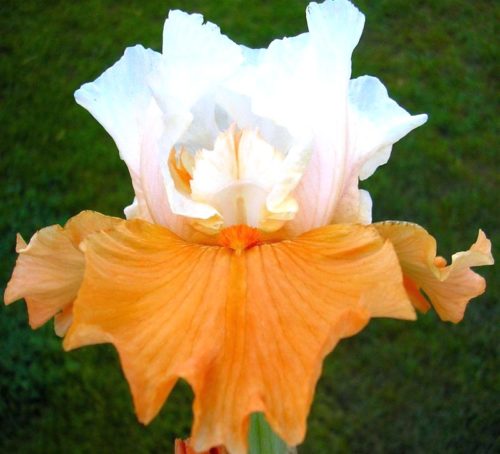
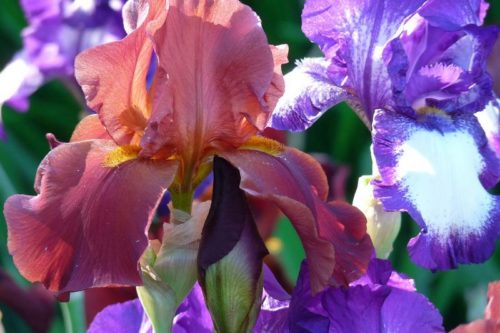
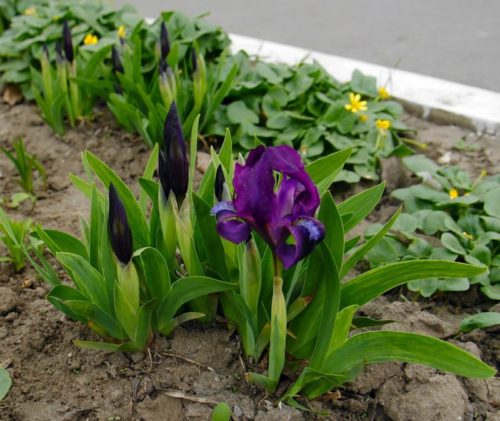
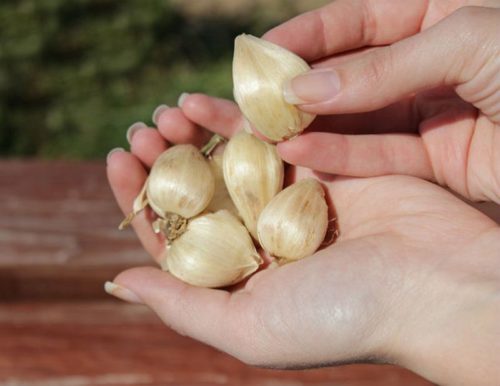
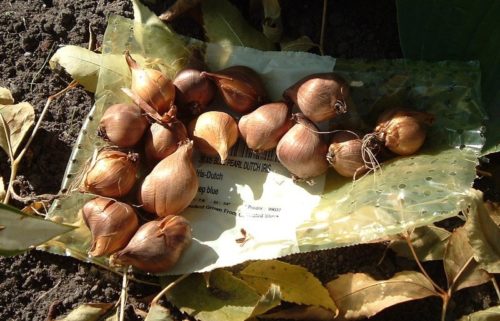
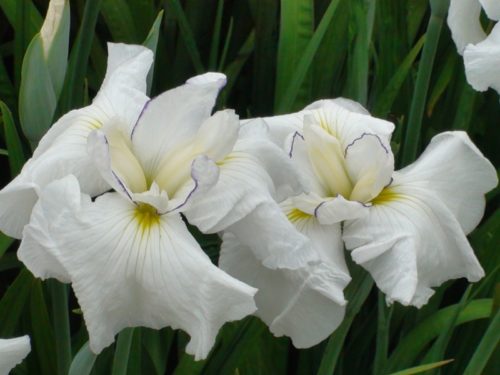

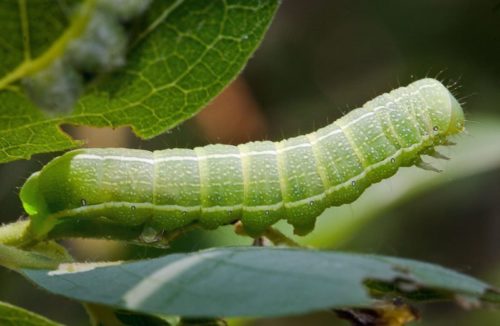
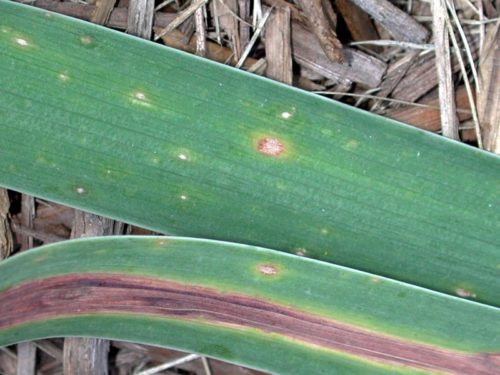












 Start a discussion ...
Start a discussion ...